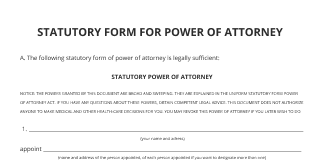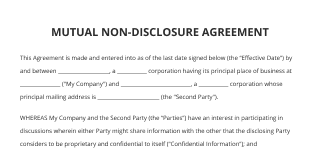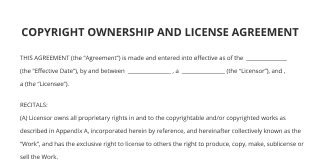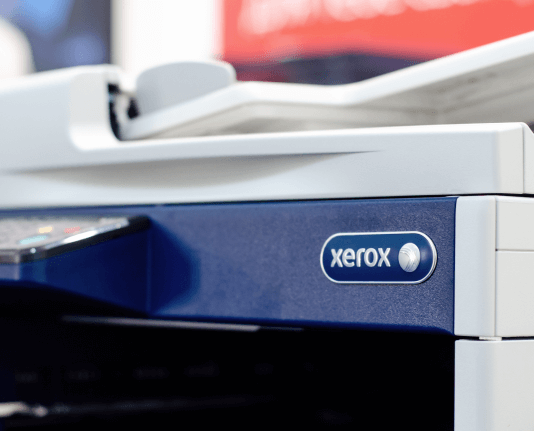Understanding the Difference between Invoice and Estimate for Your Business
Move your business forward with the airSlate SignNow eSignature solution
Add your legally binding signature
Integrate via API
Send conditional documents
Share documents via an invite link
Save time with reusable templates
Improve team collaboration
See airSlate SignNow eSignatures in action
Understanding Invoices and Estimates
Invoices and estimates serve distinct purposes in business transactions. An invoice is a formal request for payment after goods or services have been provided. It includes details such as the amount owed, payment terms, and due date. An estimate, on the other hand, is a preliminary calculation of costs provided before any work begins. It outlines potential expenses but does not obligate the client to pay until an agreement is reached.
Key Differences Between Invoices and Estimates
When comparing invoices and estimates, several key differences emerge:
- Purpose: Invoices request payment; estimates provide cost projections.
- Timing: Invoices are issued after service delivery; estimates are provided beforehand.
- Legality: Invoices are legally binding; estimates are not.
- Details: Invoices include specific charges; estimates may vary based on project scope.
When to Use an Estimate
Estimates are useful in various scenarios, especially when the scope of work is unclear. They help clients understand potential costs before committing to a project. For example, a contractor might provide an estimate for a home renovation, allowing the homeowner to budget accordingly. Using airSlate SignNow, businesses can easily create and send estimates digitally, ensuring that clients have a clear understanding of expected costs.
When to Issue an Invoice
Invoices should be issued once a service has been completed or goods delivered. They serve as a formal request for payment, detailing what was provided and the total amount due. For instance, a graphic designer would send an invoice after completing a project, specifying the services rendered and payment terms. Using airSlate SignNow, businesses can generate invoices quickly, ensuring timely payments and maintaining a professional image.
Best Practices for Creating Estimates and Invoices
To ensure clarity and professionalism, follow these best practices:
- Be Clear: Use straightforward language to describe services and costs.
- Include Essential Details: Always add your business information, client details, and unique identifiers for tracking.
- Specify Terms: Clearly outline payment terms and conditions to avoid misunderstandings.
- Utilize Digital Tools: Leverage platforms like airSlate SignNow to create, send, and manage your documents efficiently.
Common Mistakes to Avoid
When creating invoices and estimates, avoid these common pitfalls:
- Neglecting Details: Omitting important information can lead to confusion and payment delays.
- Using Inaccurate Figures: Ensure all calculations are correct to maintain credibility.
- Failing to Follow Up: If payment is not received, a polite follow-up can help maintain cash flow.
Streamlining Your Document Workflow
Using airSlate SignNow can significantly streamline your document workflow for both estimates and invoices. You can prepare and send documents for eSigning with ease, allowing clients to review and approve quickly. This not only saves time but also enhances the professionalism of your communications. By integrating digital tools, businesses can improve efficiency and accuracy in managing financial transactions.
airSlate SignNow solutions for better efficiency
Our user reviews speak for themselves






Why choose airSlate SignNow
-
Free 7-day trial. Choose the plan you need and try it risk-free.
-
Honest pricing for full-featured plans. airSlate SignNow offers subscription plans with no overages or hidden fees at renewal.
-
Enterprise-grade security. airSlate SignNow helps you comply with global security standards.

Comprehending the distinction between invoice and estimate
When handling business finances, it is vital to grasp the contrast between invoice and estimate. An invoice is a demand for payment following the delivery of services, while an estimate presents a predicted cost prior to project initiation. Utilizing tools like airSlate SignNow can simplify this process, making document management more efficient.
Steps to investigate the distinction between invoice and estimate using airSlate SignNow
- Launch your web browser and proceed to the airSlate SignNow website.
- Set up a free trial account or log in if you already possess one.
- Choose the document you intend to sign or send out for signatures.
- If you plan to utilize this document again, save it as a template for later use.
- Access your document and make required adjustments, such as incorporating fillable fields or entering specific details.
- Sign the document and add signature fields for the recipients.
- Click 'Continue' to set up and dispatch an eSignature invitation.
airSlate SignNow provides a comprehensive solution for businesses aiming to improve their document management workflows. With an extensive feature set that offers substantial ROI, it is designed to be intuitive and scalable, making it perfect for small to medium-sized enterprises. Moreover, the clear pricing structure guarantees no hidden charges, and excellent 24/7 assistance is available for all paid plans.
Begin enhancing your document workflows today with airSlate SignNow. Discover the benefits firsthand and observe how it can revolutionize your business operations!
How it works
airSlate SignNow features that users love
Get legally-binding signatures now!
FAQs
-
Can I use an estimate as an invoice?
An accepted estimate can be used to copy over information to an invoice manually or with the use of accounting software. If any changes have occurred between the time a customer accepts an estimate and an invoice is ready to be issued, highlight those changes and provide detailed reasoning. -
What is a repair invoice?
Repairs Invoice means any invoices, bills, or other documents relating to labour and material expenses incurred by a Claimant in the completion of Approved Repairs. Repairs Invoice shall not include any quotes or bids. -
How do you convert an estimate to an invoice?
Find the estimate you want to convert. In the Action column, select Convert to invoice. Make any updates to the invoice, if needed. Select Save. -
What is the meaning of estimate invoice?
Meaning of an estimate for invoicing purposes It is an informal document usually used during the initial stages of sales. It is also a way to agree or negotiate on the price and scope of work before it commences. It is also known by the names such as cost estimates or proforma invoices or bids. -
What is the difference between estimate and proforma invoice?
An estimate provides information about what your customer can expect from their transaction before it has been agreed upon. A proforma invoice typically provides full and final details once your customer has committed to a transaction. -
Is the estimate number the same as the invoice number?
Is An Invoice The Same As An Estimate? Estimates are not considered an amount owed by your customer, whereas an invoice is a formal statement of a balance due. An invoice covers the true cost of goods, labor, and other project details. -
What is the difference between an invoice and an estimate?
The main difference is that an estimate (also sometimes called a bid or a quote) is a proposal of services or sales, and what they will cost if a customer hires you. An invoice is a bill for those products or services once a customer does, in fact, hire you or purchase something from you.
What active users are saying — difference between invoice and estimate
Related searches to Understanding the difference between invoice and estimate for your business
Get more for difference between invoice and estimate
Find out other difference between invoice and estimate
- Complete and sign PDF online for free with ease
- Change document to e-sign effortlessly with airSlate ...
- Building a free online signature with airSlate SignNow
- PDF signing online free made easy for your business
- Experience seamless cloud signing for Microsoft Word ...
- Secure your documents with a digital signature on ...
- Transform your workflow with a digital signature PDF ...
- Unlock seamless PDF signing online with DSC for your ...
- Effortlessly dsc sign PDF online with airSlate SignNow
- Discover PDF signing software free online for ...
- How to authenticate a PDF with an e-signature easily
- E-signing a PDF document made effortless with airSlate ...
- Convert PDF into e-sign effortlessly with airSlate ...
- Digital Signing for Documents Simplified with airSlate ...
- Get your electronic PDF signature free with airSlate ...
- Complete PDF and sign online with ease and efficiency
- Effortlessly e-sign an Excel spreadsheet with airSlate ...
- Experience seamless digital signature PDF online with ...
- E-sign Microsoft Word document effortlessly with ...
- Experience seamless digital document signing and ...






























